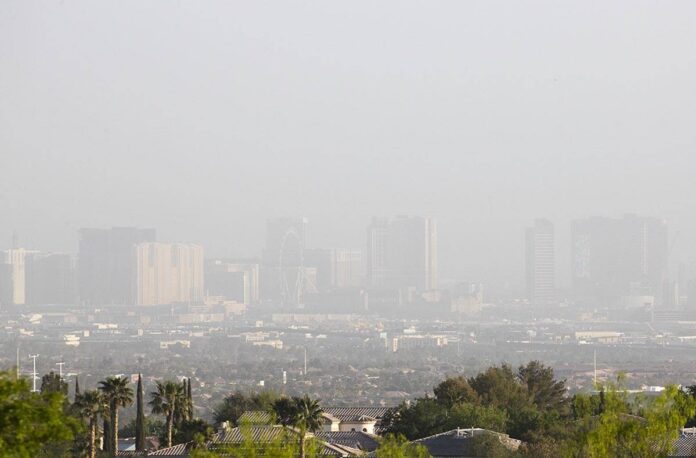
The state of Nevada’s escalating droughts, rising temperatures and intensifying wildfires pose a challenge not just to the built natural environment but also to citizens. Many locals have found that dealing with the intense heat is demanding and hard to handle.
According to Climate Central, Las Vegas is one of the fastest-warming cities in the United States with temperatures having risen by nearly 6 degrees Fahrenheit since 1970. El Paso, Tucson and Phoenix take place among the cities with the highest warming rates, preceding Las Vegas.
During the summer of 2021, specifically on July 10, the temperature reached 117 degrees Fahrenheit, the highest temperature ever recorded for the Valley. This implies that the Valley’s sweltering heat is reaching new heights, which is both unprecedented and concerning.
The global climate, through scientific discoveries and studies, is known and acknowledged to be worsening. The rate at which these climatic changes are occurring, however, presents a serious dilemma for federal, state and local governments.
Nevada’s current drought crisis, for example, is quite startling and alarming as well. According to the National Integrated Drought Information System, Nevada is experiencing extreme drought, which affects 95 percent of the region.
Clark County, for example, is currently suffering from severe drought, while minor regions, comprising 25 percent of the territory, are experiencing exceptional drought, including Nye, White Pine and Esmeralda counties.
Members of the U.S. Forest Service shockingly say they have not witnessed the land in Nevada to be this dry in years, reported by the local Fox 5 news.
“Since we went last year, 200 days with no moisture, only 20 percent of our snowpack on the mountain…,” Fuels Battalion Chief Joshua Thalacker said. “There’s not much canopy in the fuels. They all look pretty dead. I’ve never seen this.”
The wildfires blazing across California are a cause of concern and an immediate call to action for Nevada, as the smoke has been clouding the Las Vegas Valley and thickening the air, making it unusual to locals who are accustomed to seeing a clear, pure blue sky.
This deterioration in air quality is also believed to raise the risk of fatality from COVID-19 by 8 percent.
After wrapping up the three factors together, droughts, rising temperature and effects of wildfires, seeing the bigger picture becomes clear, which signals the necessity to take action.
Climate change has remained unaddressed for far too long. Countries and governments must collaborate and provide initiatives to prevent further environmental deterioration because the extinction or death of natural habitats has major consequences for human life.
